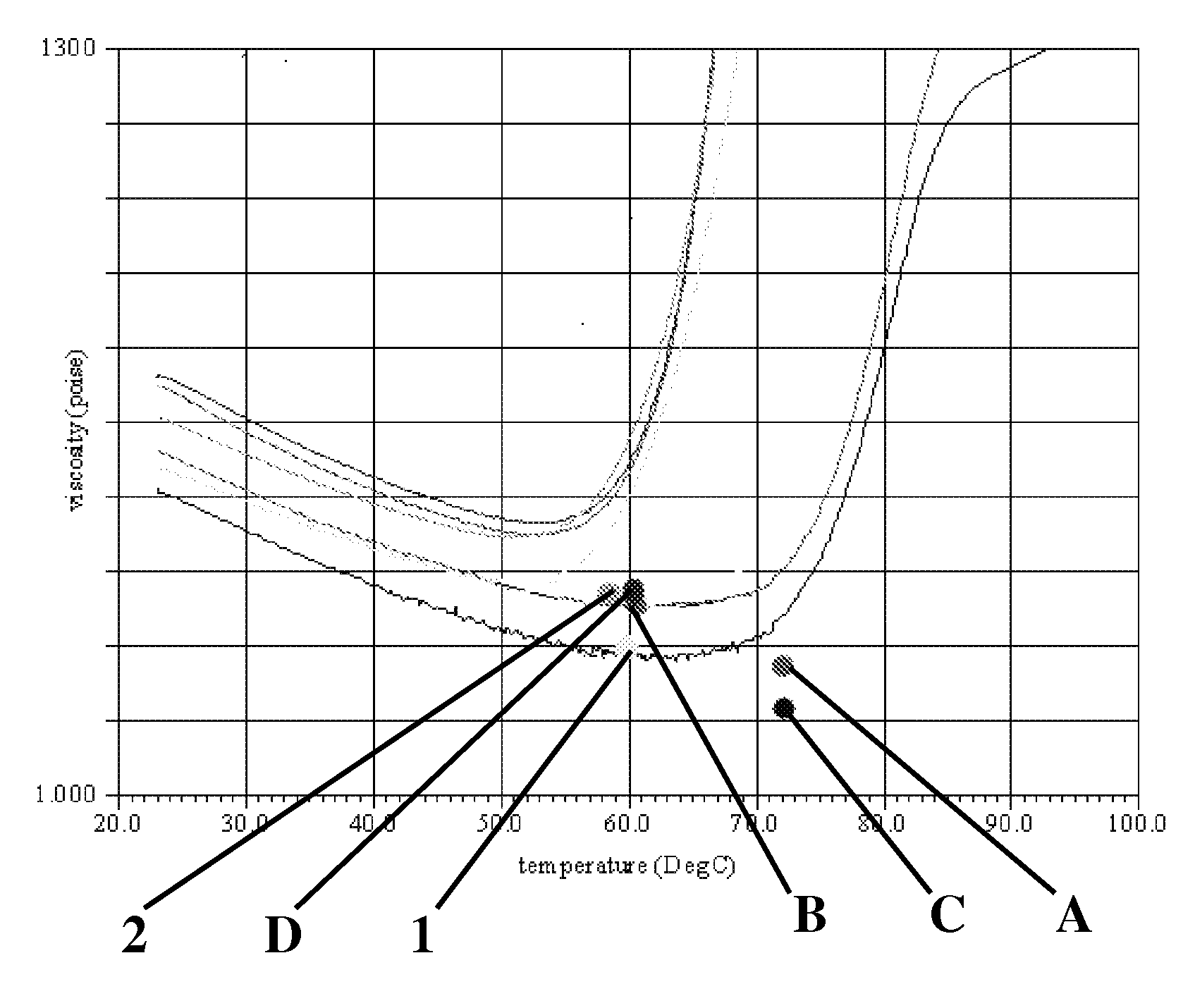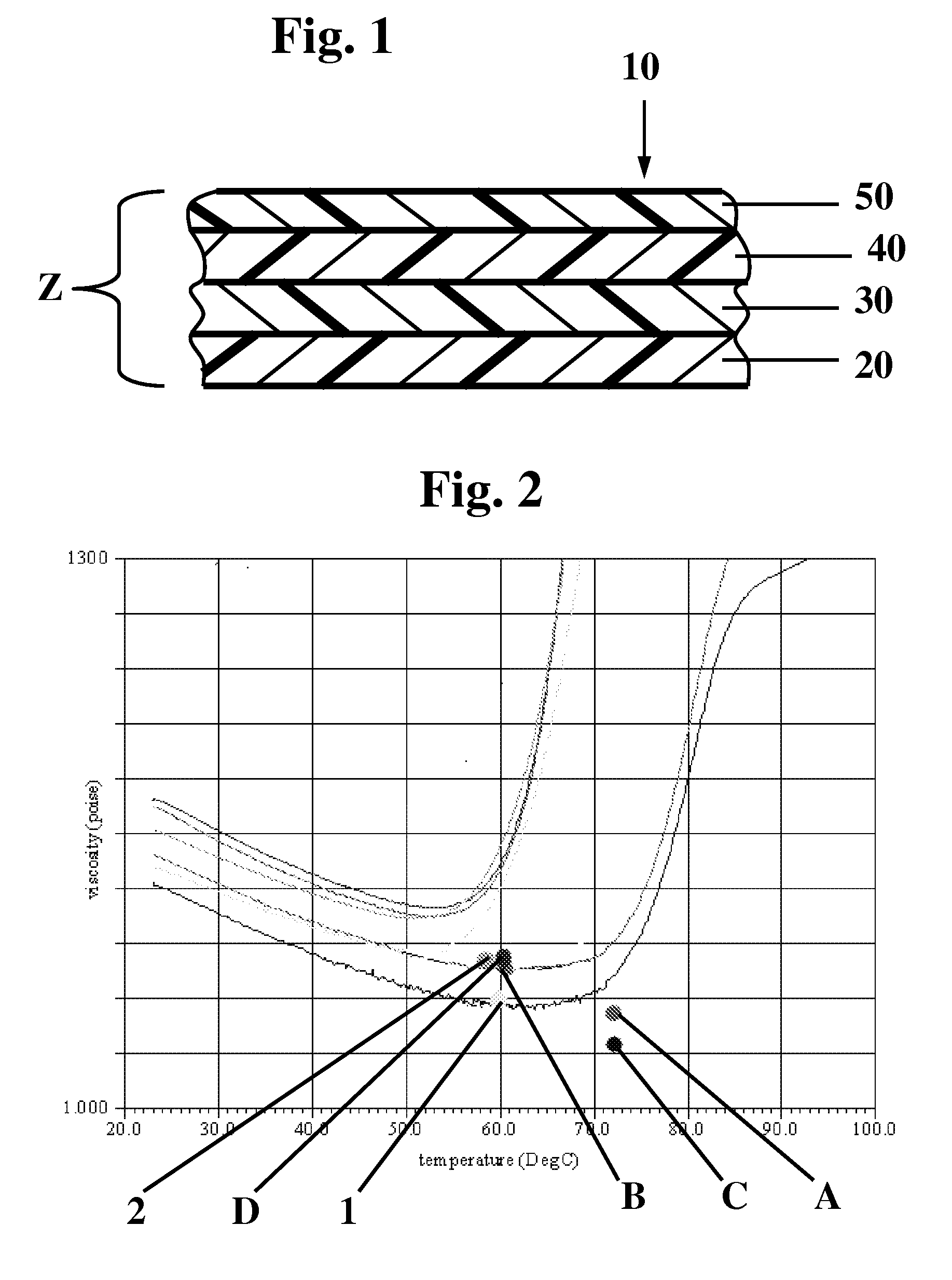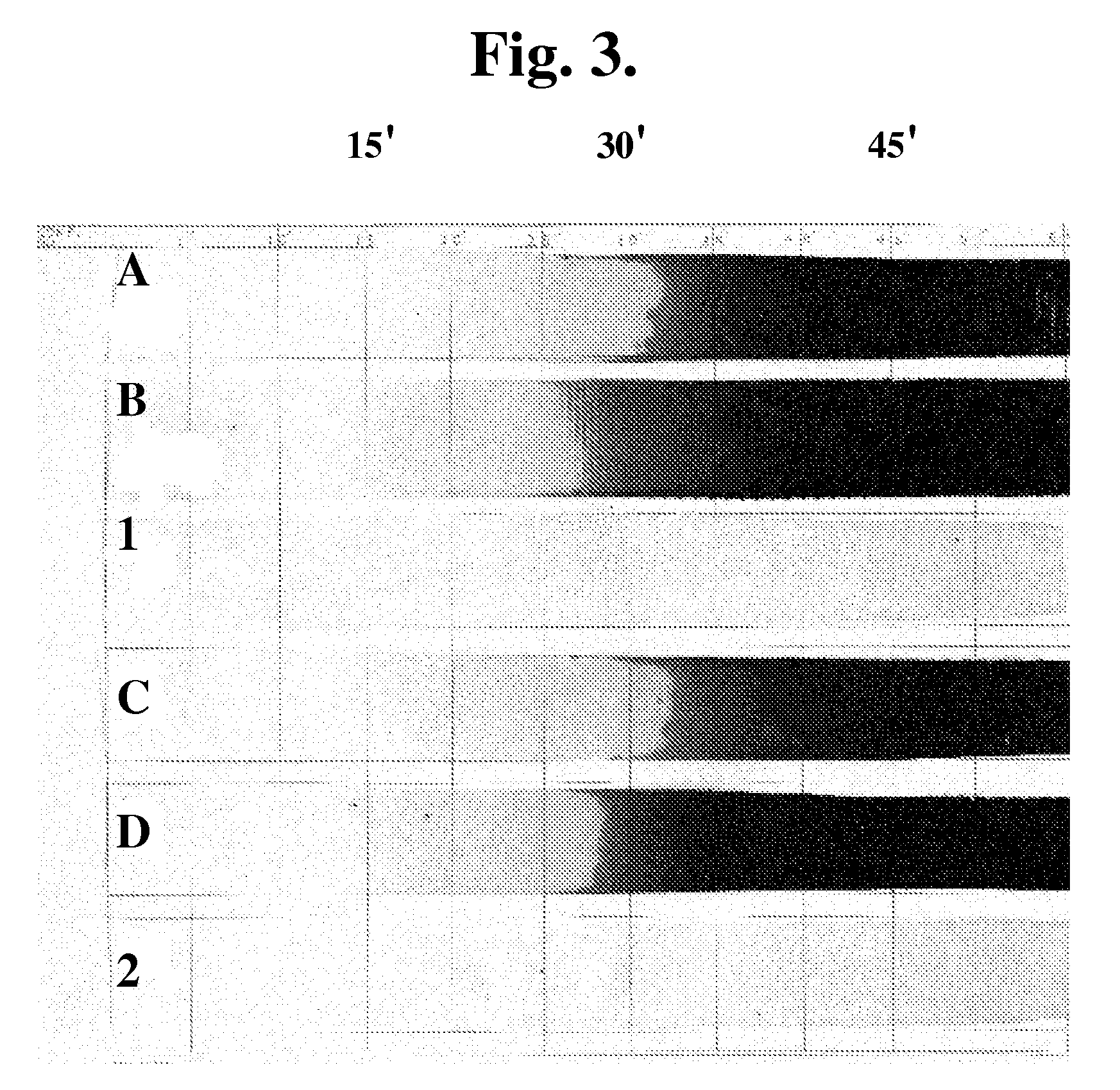Sustainable poly(vinyl chloride) mixtures for flooring products
Inactive Publication Date: 2011-05-26
POLYONE CORPORATION
View PDF7 Cites 3 Cited by
- Summary
- Abstract
- Description
- Claims
- Application Information
AI Technical Summary
Benefits of technology
Unexpectedly, EMS is ultrafast among bio-derived plasticizers in gelation with PVC resin and has very high heat stability before, during, and after fusion. Most unexpectedly, EMS is a “drop-in” replacement for BBP for vinyl-based flooring products, meaning very few alterations, if any, are needed to the manufacturing equipment or the manufacturing process.
The “rate of gelation” or “gel rate” is the pace of gelation for a given plasticizer and a given resin. The faster the gel rate, the faster the machinery can be operated to commence an early step toward converting a flowable liquid into a solid layer on a substrate.
For the flooring industry to have adequate economies of scale during manufacturing, one needs the interaction of plasticizer and resin particles during both gelation and fusion to be very fast because of the area of substrate (length and width or X-Y dimensions) being continuously covered with a flowable liquid. Once the plastisol becomes a new layer in the flooring product, it needs to have excellent heat stability and other physical properties.
Problems solved by technology
BBP is neither a renewable resource nor a sustainable ingredient for the long-term flooring industry goals of product life-cycle raw material recovery.
Method used
the structure of the environmentally friendly knitted fabric provided by the present invention; figure 2 Flow chart of the yarn wrapping machine for environmentally friendly knitted fabrics and storage devices; image 3 Is the parameter map of the yarn covering machine
View moreImage
Smart Image Click on the blue labels to locate them in the text.
Smart ImageViewing Examples
Examples
Experimental program
Comparison scheme
Effect test
examples
Table 2 shows the source of the ingredients and the amounts used to prepare Comparative Examples A-D and Examples 1-2. Comparative Examples A and C used diisononyl phthalate (DINP), a well-known plasticizer for polyvinyl halides but one which does not have a gelation time fast enough for flooring manufacturing. Comparative Examples B and D used BBP. Examples 1 and 2 used EMS.
the structure of the environmentally friendly knitted fabric provided by the present invention; figure 2 Flow chart of the yarn wrapping machine for environmentally friendly knitted fabrics and storage devices; image 3 Is the parameter map of the yarn covering machine
Login to View More PUM
| Property | Measurement | Unit |
|---|---|---|
| Percent by mass | aaaaa | aaaaa |
| Percent by mass | aaaaa | aaaaa |
| Percent by mass | aaaaa | aaaaa |
Login to View More
Abstract
A mixture of poly(vinyl chloride) and epoxidized methyl soyate is disclosed. The epoxidized methyl soyate as a plasticizer replaces butyl benzyl phthalate which is conventionally used for the manufacture of multi-layer laminate sheet flooring or single layer tile flooring. The epoxidized methyl soyate, a bio-plasticizer, unexpectedly is a “drop-in” replacement for the butyl benzyl phthalate, both in terms of processing and performance. Also poly(vinyl chloride)-epoxidized methyl soyate mixtures have much better heat stability than poly(vinyl chloride)-butyl benzyl phthalate mixtures.
Description
FIELD OF THE INVENTIONThis invention relates to vinyl mixtures, especially plastisols, made using sustainable plasticizers from renewable resources.BACKGROUND OF THE INVENTIONAll industrial, construction, and consumer products strive to identify raw materials from renewable resources grown or otherwise harvested from the plant or animal kingdom. The expense and increasing scarcity of petrochemically originating raw materials only accentuate the difficulties of recycling after useful life of products made from such raw materials.The polymer industry, which had started in the early 20th Century with renewable resources such as natural latex for rubber goods, is now returning to such renewable raw materials whenever possible.Plastisols are another type of liquid-turn-solid polymer compound, comprising principally particles of polymer resin and a plasticizer which carries the particles before gelation and fusion to make the plastisol into a finally-formed solid plastic article. While on...
Claims
the structure of the environmentally friendly knitted fabric provided by the present invention; figure 2 Flow chart of the yarn wrapping machine for environmentally friendly knitted fabrics and storage devices; image 3 Is the parameter map of the yarn covering machine
Login to View More Application Information
Patent Timeline
 Login to View More
Login to View More IPC IPC(8): B32B27/30B05D3/02C08K5/1515B29C39/16C09D7/63
CPCC08K5/1515C09D7/1233C08K5/0016E04F15/10C08L27/06C09D7/63Y10T428/31935
Inventor HORTON, STEPHEN D.
Owner POLYONE CORPORATION
Features
- R&D
- Intellectual Property
- Life Sciences
- Materials
- Tech Scout
Why Patsnap Eureka
- Unparalleled Data Quality
- Higher Quality Content
- 60% Fewer Hallucinations
Social media
Patsnap Eureka Blog
Learn More Browse by: Latest US Patents, China's latest patents, Technical Efficacy Thesaurus, Application Domain, Technology Topic, Popular Technical Reports.
© 2025 PatSnap. All rights reserved.Legal|Privacy policy|Modern Slavery Act Transparency Statement|Sitemap|About US| Contact US: help@patsnap.com



